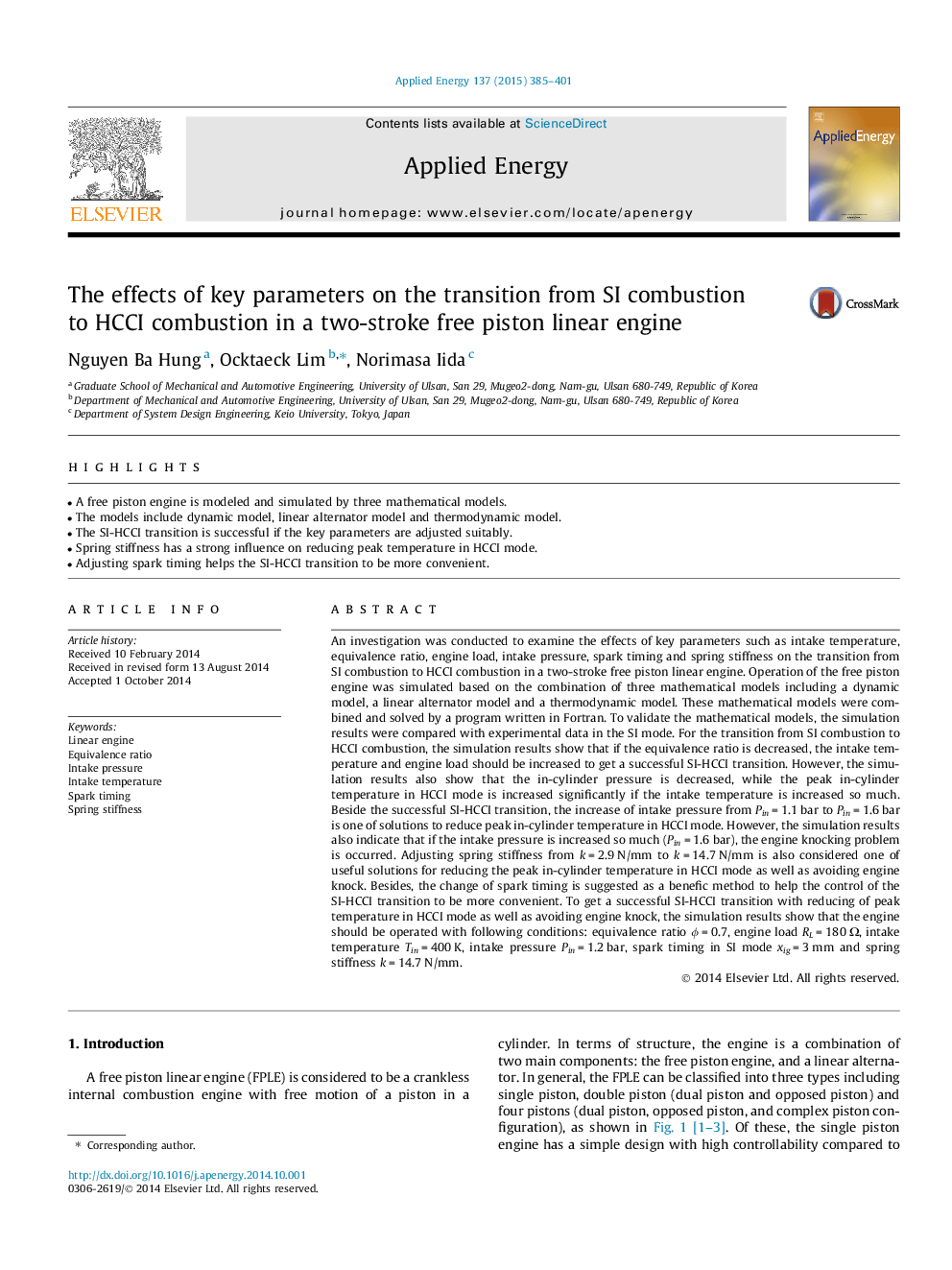| کد مقاله | کد نشریه | سال انتشار | مقاله انگلیسی | نسخه تمام متن |
|---|---|---|---|---|
| 6688547 | 501887 | 2015 | 17 صفحه PDF | دانلود رایگان |
عنوان انگلیسی مقاله ISI
The effects of key parameters on the transition from SI combustion to HCCI combustion in a two-stroke free piston linear engine
دانلود مقاله + سفارش ترجمه
دانلود مقاله ISI انگلیسی
رایگان برای ایرانیان
کلمات کلیدی
موضوعات مرتبط
مهندسی و علوم پایه
مهندسی انرژی
مهندسی انرژی و فناوری های برق
پیش نمایش صفحه اول مقاله

چکیده انگلیسی
An investigation was conducted to examine the effects of key parameters such as intake temperature, equivalence ratio, engine load, intake pressure, spark timing and spring stiffness on the transition from SI combustion to HCCI combustion in a two-stroke free piston linear engine. Operation of the free piston engine was simulated based on the combination of three mathematical models including a dynamic model, a linear alternator model and a thermodynamic model. These mathematical models were combined and solved by a program written in Fortran. To validate the mathematical models, the simulation results were compared with experimental data in the SI mode. For the transition from SI combustion to HCCI combustion, the simulation results show that if the equivalence ratio is decreased, the intake temperature and engine load should be increased to get a successful SI-HCCI transition. However, the simulation results also show that the in-cylinder pressure is decreased, while the peak in-cylinder temperature in HCCI mode is increased significantly if the intake temperature is increased so much. Beside the successful SI-HCCI transition, the increase of intake pressure from Pin = 1.1 bar to Pin = 1.6 bar is one of solutions to reduce peak in-cylinder temperature in HCCI mode. However, the simulation results also indicate that if the intake pressure is increased so much (Pin = 1.6 bar), the engine knocking problem is occurred. Adjusting spring stiffness from k = 2.9 N/mm to k = 14.7 N/mm is also considered one of useful solutions for reducing the peak in-cylinder temperature in HCCI mode as well as avoiding engine knock. Besides, the change of spark timing is suggested as a benefic method to help the control of the SI-HCCI transition to be more convenient. To get a successful SI-HCCI transition with reducing of peak temperature in HCCI mode as well as avoiding engine knock, the simulation results show that the engine should be operated with following conditions: equivalence ratio Ï = 0.7, engine load RL = 180 Ω, intake temperature Tin = 400 K, intake pressure Pin = 1.2 bar, spark timing in SI mode xig = 3 mm and spring stiffness k = 14.7 N/mm.
ناشر
Database: Elsevier - ScienceDirect (ساینس دایرکت)
Journal: Applied Energy - Volume 137, 1 January 2015, Pages 385-401
Journal: Applied Energy - Volume 137, 1 January 2015, Pages 385-401
نویسندگان
Nguyen Ba Hung, Ocktaeck Lim, Norimasa Iida,